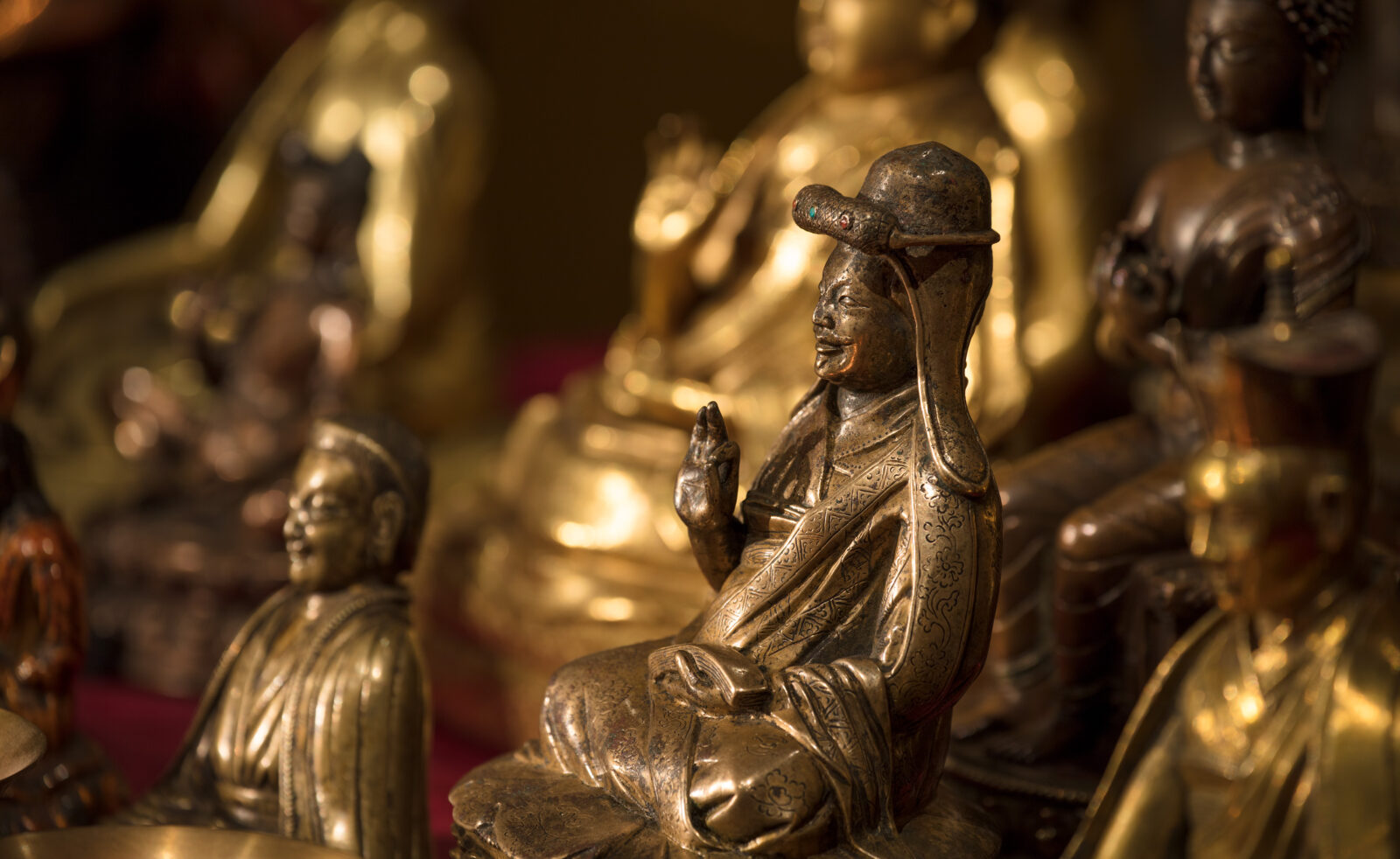The Rubin supports its mission through the collection, preservation, and exhibition of outstanding examples of art and cultural heritage from the greater Himalayan region, using these artworks to inspire and inform visitors about this part of Asia.
Objects join the collection by means of gift, bequest, purchase, exchange, or other transactions through which the title passes to the Museum. The Rubin considers the following factors when adding a work of art to the collection:
- Provenance and ownership history
- Quality
- Rarity
- Artistic merit and aesthetics
- Intellectual value
- Price or value
- Physical condition
- Cost of storage and maintenance
- Restriction of use
- Potential for exhibition and research
During the acquisition process the Rubin strictly adheres to applicable United States law and other guidelines established in the Museum’s collection management policy.
The Rubin’s acquisition and deaccession policies ensure the Museum remains a professionally responsible institution. The Museum periodically assesses the collection, and during this process objects may be identified that are not critical to the Rubin or its mission, or objects that should be returned to their country of origin. These objects are recommended for removal from the collection in a process known as deaccessioning.
Deaccessioning is a common museum practice for which professional associations have established high standards and rigorous scrutiny. While there are many ways that museums dispose of deaccessioned objects (including gifts to other institutions), most often they sell them to raise funds for other needed objects. Proceeds from sales are used only to fund other acquisitions.
Objects that have been identified as having been unlawfully or unethically sold or acquired within their ownership histories may be returned to their countries of origin in a process known as repatriation.
Learn more about the Rubin’s ongoing provenance research and ownership resolutions.
View all deaccessioned objects
The Rubin’s commitment to preserving both antiquities and contemporary art is exemplified through our cutting-edge storage solutions. The Museum’s advanced facilities in New York feature climate-controlled environments meticulously regulated to balance temperature and humidity, protecting the delicate state of many historical artifacts and ensuring the integrity of contemporary artworks. State-of-the-art monitoring systems at these facilities keep a constant watch on conditions, while top-tier security measures safeguard the collection from any potential threats. Emergency evacuation plans are in place in the case of any potential threats that materialize. The Rubin also preserves the collection by regularly consulting with conservation experts who employ the latest non-invasive techniques to stabilize and improve upon the condition of artworks where necessary. These efforts ensure that the collection remains well preserved and accessible for future generations.
The Rubin’s collection exists primarily to support exhibitions and research programs, and selections from the collection are currently on view throughout the world. The Museum is proud to share objects from the collection with other museums and institutions worldwide.
See the Rubin’s collection around the world.
The Rubin welcomes researchers to make use of the collection. To request research access to objects in the Museum’s collection, please complete the Research Registration Form.
Complete form
Photographic and digital images of objects from the Museum’s collection can be obtained through the Department of Rights and Reproductions. New images can be created by request. To request use of an image from the Museum’s collection, fill out the Image Permission Request Form. Please see the Collection Image Fees document for estimated costs.
Complete form
